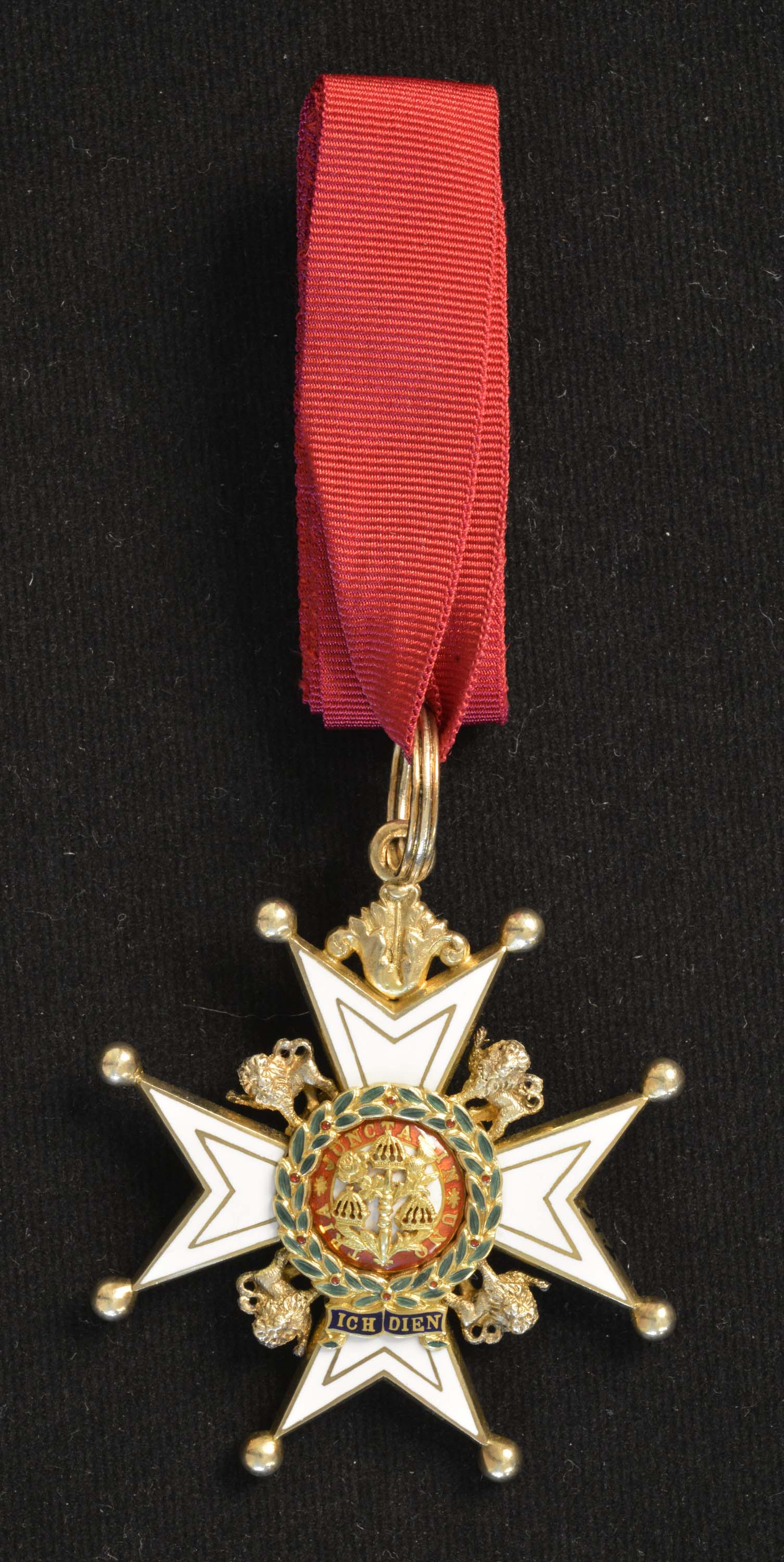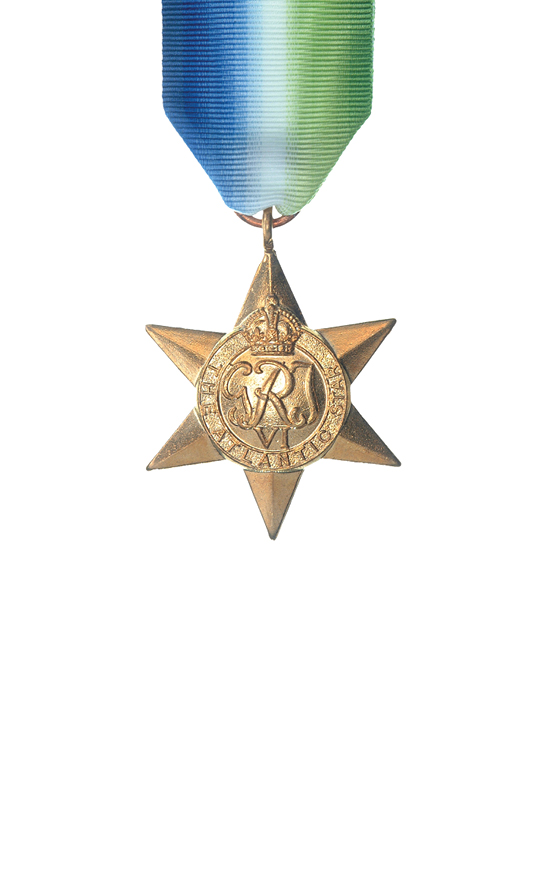

Display No. 11F
CARR, Lawrence George
Lawrence Carr joined the Royal New Zealand Naval Volunteer Reserve (RNZNVR) in 1942 during the Second World War, and was immediately seconded to the Royal Navy. He spent time serving in destroyers in both the Atlantic and Mediterranean Fleets. In 1944 he was commissioned as a Lieutenant in the Royal New Zealand Navy (RNZN) and spent the end of the war in HMNZS Achilles carrying out occupational duties in Japan. Carr progressed rapidly through the ranks and eventually commanded a shore installation, before being appointed to command the frigate HMNZS Kaniere. He saw combat in Korean waters, for which he was awarded in 1954, the Distinguished Service Cross (DSC) by the British Government. In 1958 he served as an Aide de Camp to the Governor General. He commanded HMNZS Philomel and the frigate HMNZS Taranaki, followed by the positions of Commodore Auckland, 2nd Member of the New Zealand Naval Board, and 1st Member of the New Zealand Naval Board. Carr served as Chief of Navy between 1969 and 1972. Carr was created a Companion of the Order of the Bath by the New Zealand Government in the New Years Honours list in 1971.
Awarded medal(s)
Medal Description [Left to Right]:
Companion of the Most Honourable Order of the Bath (CB)

British order of chivalry with three classes of members: Knight and Dame Grand Cross (GCB), Knight and Dame Commander (KCB and DCB) and Companion (CB). It was awarded to military personnel during both World Wars. Recipients of the order are usually senior military officers or senior civil servants. The ribbon is crimson red.
The Distinguished Service Cross (DSC)

Instituted in 1901, as the Conspicuous Service Cross, this award was renamed the Distinguished Service Cross (DSC) in 1914. It was awarded to junior naval officers and senior naval ratings for courage and devotion to duty on active service. Eligibility was later extended to officers of the Merchant Navy and to Army and Air Force officers serving in HM Ships. Many New Zealand naval officers were awarded the DSC for their actions during the Second World War. Since 1993 the DSC has been made available to all ranks in the United Kingdom. The ribbon has three equal stripes of dark blue, white and dark blue. Bars are awarded for subsequent courageous acts.
The 1939-1945 Star

The 1939-45 Star is the first in a series of eight campaign stars instituted in 1945 to recognise service in World War Two. The ribbon has three equal vertical stripes of dark blue, red and light blue. The dark blue stripe symbolises the service of the Navy and the Merchant Navy, the red stripe symbolises the service of the Army, and the light blue stripe symbolises the service of the Air Force. The equal width bands represent the equal contributions of the three service arms towards victory. The ribbon was devised by King George VI. Two clasps could be awarded with this medal: ‘Battle of Britain’ and ‘Bomber Command’. Only aircrew would qualify for these clasps although a small number of Fleet Air Arm naval pilots flew for the air force and would be eligible for the ‘Battle of Britain’ clasp.
The Atlantic Star

The Atlantic Star was awarded for service during the Second World War. It was instituted to commemorate the Battle of the Atlantic the longest continuous military campaign in the Second World War running from 3 September, 1939 – 8 May, 1945. Six months naval service or four months air service in the Atlantic, United Kingdom (‘home’) waters or North Russian waters was normally required. The ribbon is watered silk coloured blue, white and green, symbolising service in the oceans. Two clasps could be awarded with this medal: ‘France and Germany’ and ‘Air Crew Europe’. Personnel issued the Atlantic Star who then qualified for either the France and Germany and the Air Crew Europe Stars were awarded a clasp in respect of the second only (as only one clasp could be worn on the star).
The Italy Star

The Italy Star was awarded for operational service in Italy and adjacent countries in the Second World War between 11 June 1943 and 8 May 1945. No clasps were awarded. The ribbon uses the national colours of Italy; red, white and green as seen on the flag.
The Defence Medal

The Defence Medal was awarded to British and Commonwealth forces who served during the Second World War. It was awarded to New Zealand military personnel who served overseas in a non-operational area such as Great Britain, Palestine or Fiji. The ribbon’s flame-coloured orange centre band and green edge bands symbolise enemy attacks on Britain’s green and pleasant land. The narrow black stripes represent the black-outs against enemy air-attacks.
The War Medal 1939-1945

The War Medal 1939-45 was awarded across the British Commonwealth to all full-time members of the Armed Forces in the Second World War for 28 days service between 3 September 1939 and 2 September 1945, irrespective of where they were serving. The ribbon is the red, white, and blue of the (British) Union Flag. There is a narrow central red stripe with a narrow white stripe on either side. There are broad red stripes at either edge, the two intervening stripes being blue.
A bronze oak leaf on the medal ribbon denotes that the recipient was Mentioned in Despatches. To be Mentioned in Despatches a member of the armed forces had their name mentioned in an official report, written by a superior officer, and sent to a higher command. The report would describe the individual’s gallant or meritorious action in the face of the enemy.
The New Zealand War Service Medal

The New Zealand War Service Medal was awarded for 28 days’ full time service or six months’ part time service in the Second World War in any of the New Zealand Armed Forces including the Reserves, Naval Auxiliary Patrol Service, or Home Guard, between 3 September 1939 and 2 September 1945.
The Naval General Service Medal 1915-1962

The Naval General Service Medal (NGSM) 1915-1962, was instituted in 1915 to recognise service in minor naval operations for which no separate medal was intended. They were always issued with a clasp for the specific area of operation. A total of seventeen clasps were awarded. Examples in our collection include the ‘Persian Gulf 1909-14’ clasp for operations against gun-runners; the ‘Palestine 1936-39’ and ‘Palestine 1945-48’ clasps which were issued for service in the pre-war Arab uprising and post-war Jewish insurgency; the ‘Minesweeping 1945-51’ clasp which was awarded for six months minesweeping service afloat; the ‘Malaya’ clasp recognising the service of naval personnel, including the Royal New Zealand Navy, during the Malayan Emergency of 1948-1960; and the ‘Yangtze 1949’ clasp for those on HMS Amethyst and other vessels attacked by Communist Chinese forces.
The Korea Medal

This medal was instituted in 1951, to recognise the service of Commonwealth troops in the Korean War between 2 July 1950 and 27 July 1953. It is sometimes referred to as the Queen’s Korea Medal to differentiate it from the United Nations Korea Medal. For naval forces, qualification is 28 days or more afloat in the operational area or at least one day of shore duty. The medal’s reverse features Hercules wrestling the Hydra – a symbolic representation of communism. The ribbon has alternating yellow and blue stripes. Blue represents the United Nations.
United Nations Medal Korea

The United Nations Medal (Korea) was awarded for service during the Korean War and the year following the armistice (July 1950 to July 1954). It was the first international award created by the United Nations and features the UN emblem of a projection map of the world between two olive branches. The medal recognises the service of all military troops participating as part of the UN forces in Korea and was manufactured in the language of each country. It was also awarded to a limited range of civilians whose organisations were certified by the United Nations Commander-in-Chief as having directly supported military operations in Korea between 1950 and 1954.
Coronation Medal 1953

This medal was issued to celebrate the coronation of Queen Elizabeth II in 1953. It was awarded to citizens of the British Commonwealth both military and civilian. Only 37 medals were issued with the names of the recipients engraved on them. These were awarded to the members of the British expedition which had reached the summit of Mount Everest on the morning of the Coronation ceremony. New Zealander, Sir Edmund Hillary, one of the two climbers who conquered the mountain, was knighted and received the Coronation Medal from the new Queen at Buckingham Palace several weeks later.

